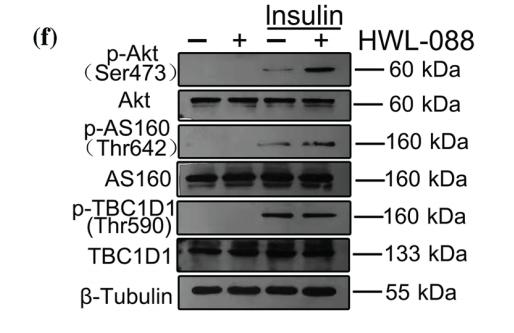Phospho-TBC1D1 (Thr590) Antibody - #AF2422
| Product: | Phospho-TBC1D1 (Thr590) Antibody |
| Catalog: | AF2422 |
| Description: | Rabbit polyclonal antibody to Phospho-TBC1D1 (Thr590) |
| Application: | WB IHC |
| Cited expt.: | WB |
| Reactivity: | Human, Mouse, Rat |
| Mol.Wt.: | 160kDa; |
| Uniprot: | Q60949 |
| RRID: | AB_2819092 |
Related Downloads
Protocols
Product Info
Source:
Rabbit
Application:
WB 1:500-1:2000, IHC 1:50-1:200
*The optimal dilutions should be determined by the end user. For optimal experimental results, antibody reuse is not recommended.
*Tips:
*The optimal dilutions should be determined by the end user. For optimal experimental results, antibody reuse is not recommended.
*Tips:
WB: For western blot detection of denatured protein samples. IHC: For immunohistochemical detection of paraffin sections (IHC-p) or frozen sections (IHC-f) of tissue samples. IF/ICC: For immunofluorescence detection of cell samples. ELISA(peptide): For ELISA detection of antigenic peptide.
Reactivity:
Human,Mouse,Rat
Clonality:
Polyclonal
Specificity:
Phospho-TBC1D1 (Thr590) Antibody detects endogenous levels of TBC1D1 only when phosphorylated at Thr590.
RRID:
AB_2819092
Cite Format: Affinity Biosciences Cat# AF2422, RRID:AB_2819092.
Cite Format: Affinity Biosciences Cat# AF2422, RRID:AB_2819092.
Conjugate:
Unconjugated.
Purification:
The antibody is from purified rabbit serum by affinity purification via sequential chromatography on phospho-peptide and non-phospho-peptide affinity columns.
Storage:
Rabbit IgG in phosphate buffered saline , pH 7.4, 150mM NaCl, 0.02% sodium azide and 50% glycerol. Store at -20 °C. Stable for 12 months from date of receipt.
Alias:
Fold/Unfold
KIAA1108; TBC 1; TBC; TBC1 (tre 2/USP6, BUB2, cdc16) domain family, member 1; TBC1; TBC1 domain family member 1; Tbc1d1; TBCD1_HUMAN;
Immunogens
Immunogen:
A synthesized peptide derived from mouse TBC1D1 around the phosphorylation site of Thr590.
References
1). HWL-088, a new highly potent FFAR1 agonist, improves glucolipid metabolism and acts additively with Metformin in ob/ob diabetic mice. BRITISH JOURNAL OF PHARMACOLOGY, 2020
(PubMed: 31971610)
[IF=6.8]
Application: WB Species: mice Sample: liver
FIGURE 4 Effects of HWL-088 on plasma glucose levels (a) and corresponding AUC0–90min (b) of glucose during an OGTT in fasting ob/ob
mice. Tested agents or vehicle was orally administered to ob/ob mice twice daily for 30 days, and the OGTTs were determined on treatment days
1, 15, and 30. After long-term treatment, hepatic expression of genes involved in gluconeogenesis (c) and glycogen synthesis (d) as well as hepatic
expression of GSK3β (e). Effects of HWL-088 on the phosphorylation of AKT, AS160, and TBC1D1 in L6 myoblasts cells (f). Values are
mean ± SD (n = 6). *P ≤ .05 was analysed using a one-way ANOVA with Tukey's multiple-comparison post hoc test
Restrictive clause
Affinity Biosciences tests all products strictly. Citations are provided as a resource for additional applications that have not been validated by Affinity Biosciences. Please choose the appropriate format for each application and consult Materials and Methods sections for additional details about the use of any product in these publications.
For Research Use Only.
Not for use in diagnostic or therapeutic procedures. Not for resale. Not for distribution without written consent. Affinity Biosciences will not be held responsible for patent infringement or other violations that may occur with the use of our products. Affinity Biosciences, Affinity Biosciences Logo and all other trademarks are the property of Affinity Biosciences LTD.

